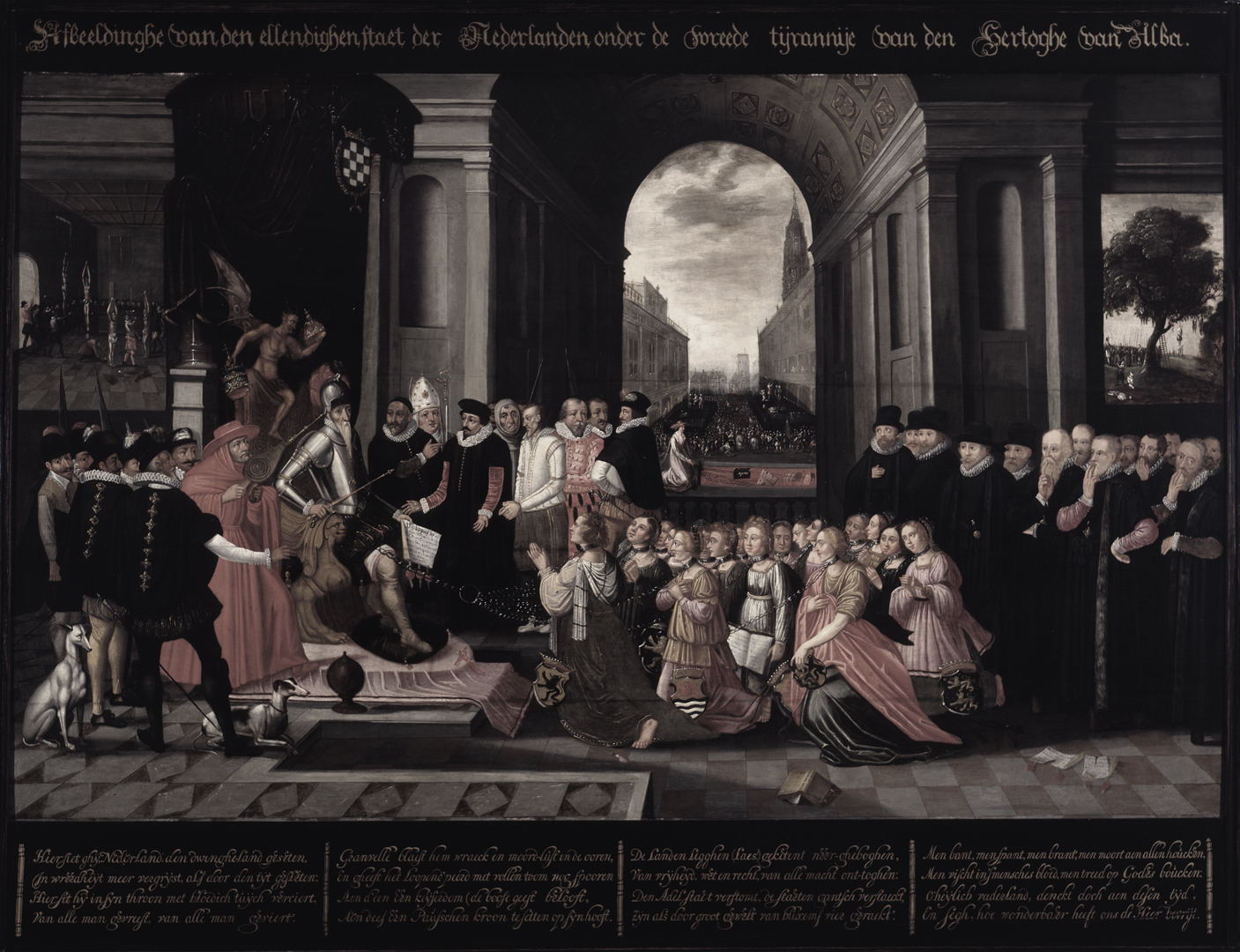
Alba's Throne
Propaganda played an important role in the war against the Spanish Empire. When the Dutch Revolt began, the Duke of Alba (1507 – 1582) was the primary target. Alba was sent to the Netherlands by King Philip II in 1567, to deal with the rebels with a heavy hand.
In the propaganda war , Alba was consistently depicted as the personification of a cruel and bloodthirsty regime. The painting is from 1627. It was intended to persuade people not to give up the struggle. Because if the enemy should win, another reign of terror like Alba’s would follow.
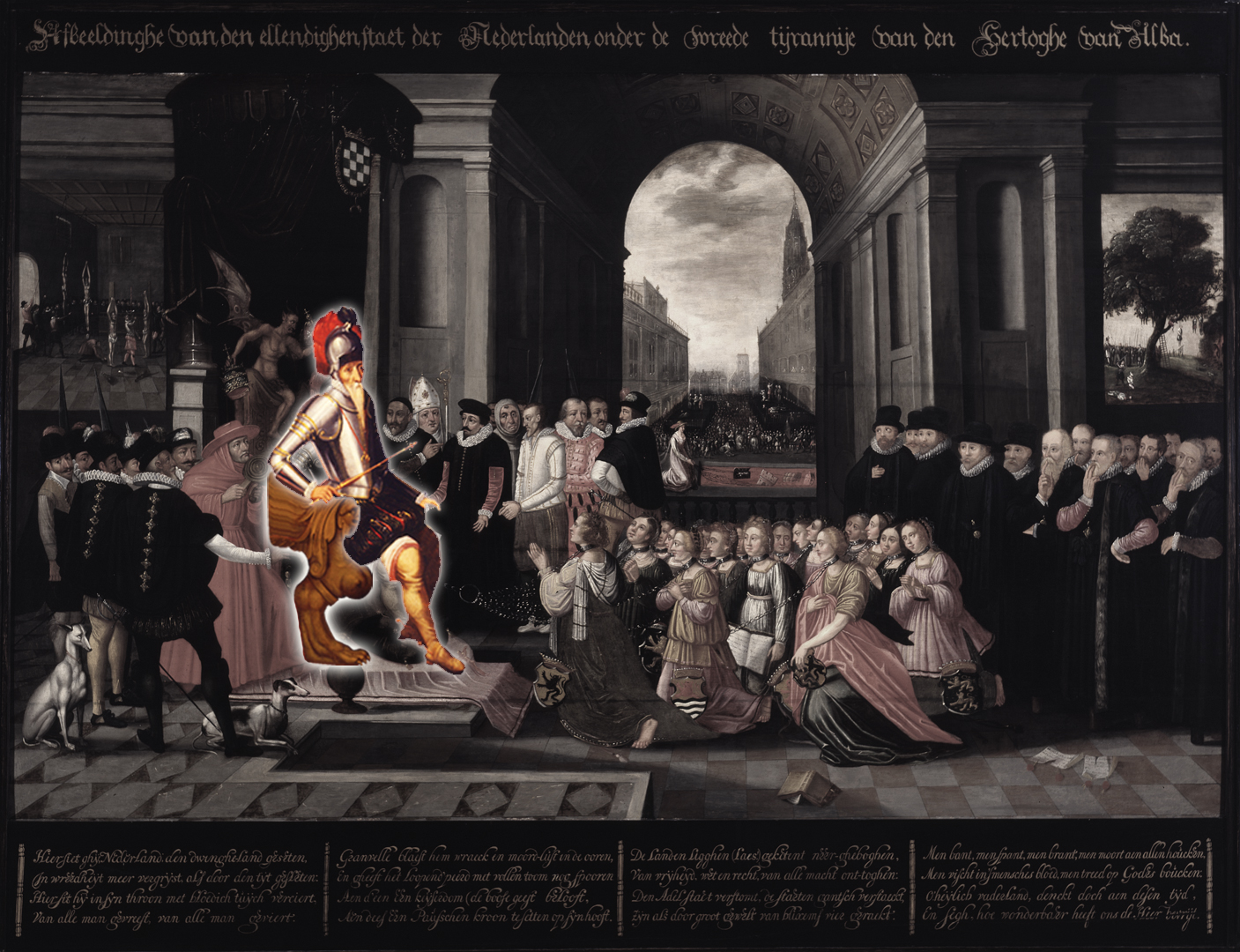
Alba on a throne
In 1567, the Duke of Alba established a special tribunal, the Council of Troubles. This tribunal soon came to be popularly known as the Council of Blood.
Thousands of people were convicted by the Council of Troubles; 1100 of them were sentenced to death. In the painting, Alba sits as judge on the throne, surrounded by his advisors, with the defendants before him. The men to Alba’s right are probably Juan de Vargas and Luis del Rio, two infamous judges of the Council of Blood. Next to the judges are two nobles who have been convicted by them. They may well be the counts of Egmont and of Horne.
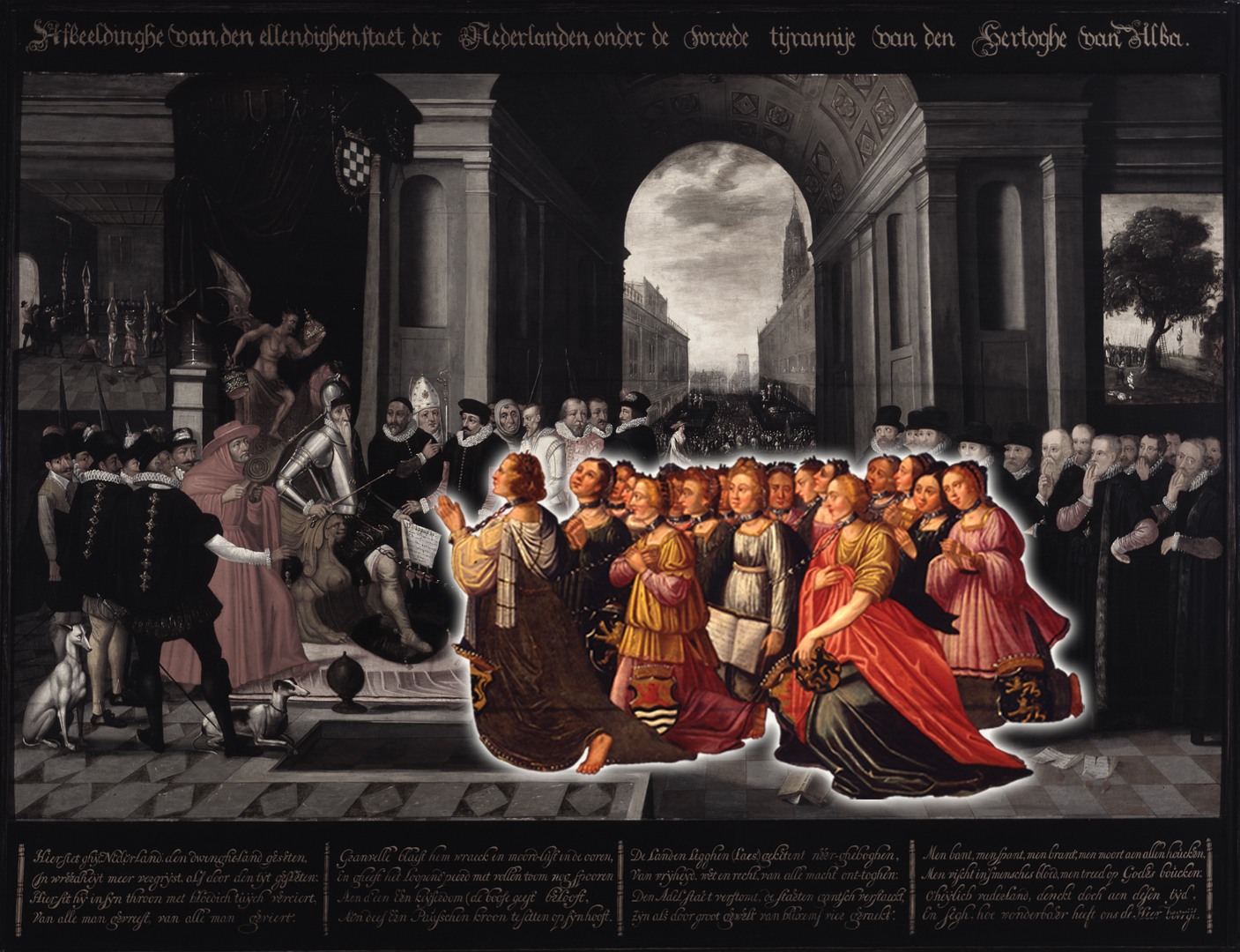
17 women or 17 provinces
These seventeen women represent the seventeen provinces of the Netherlands. They are bound to the duke by chains. They must obey Alba or the Spanish Empire.
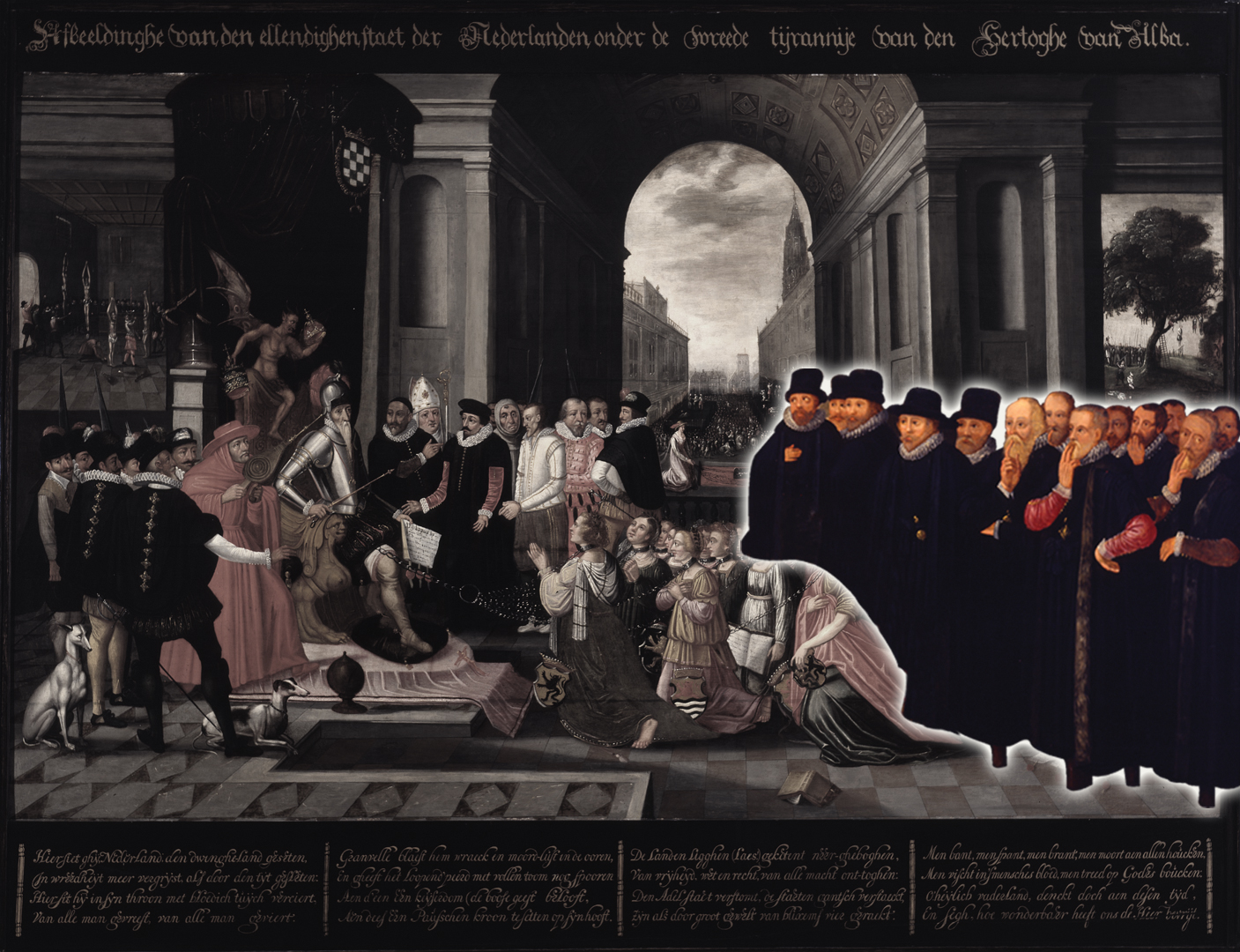
Administrators of the provinces
To the right in the painting, the administrators gesture silence. In other words, they have no say.
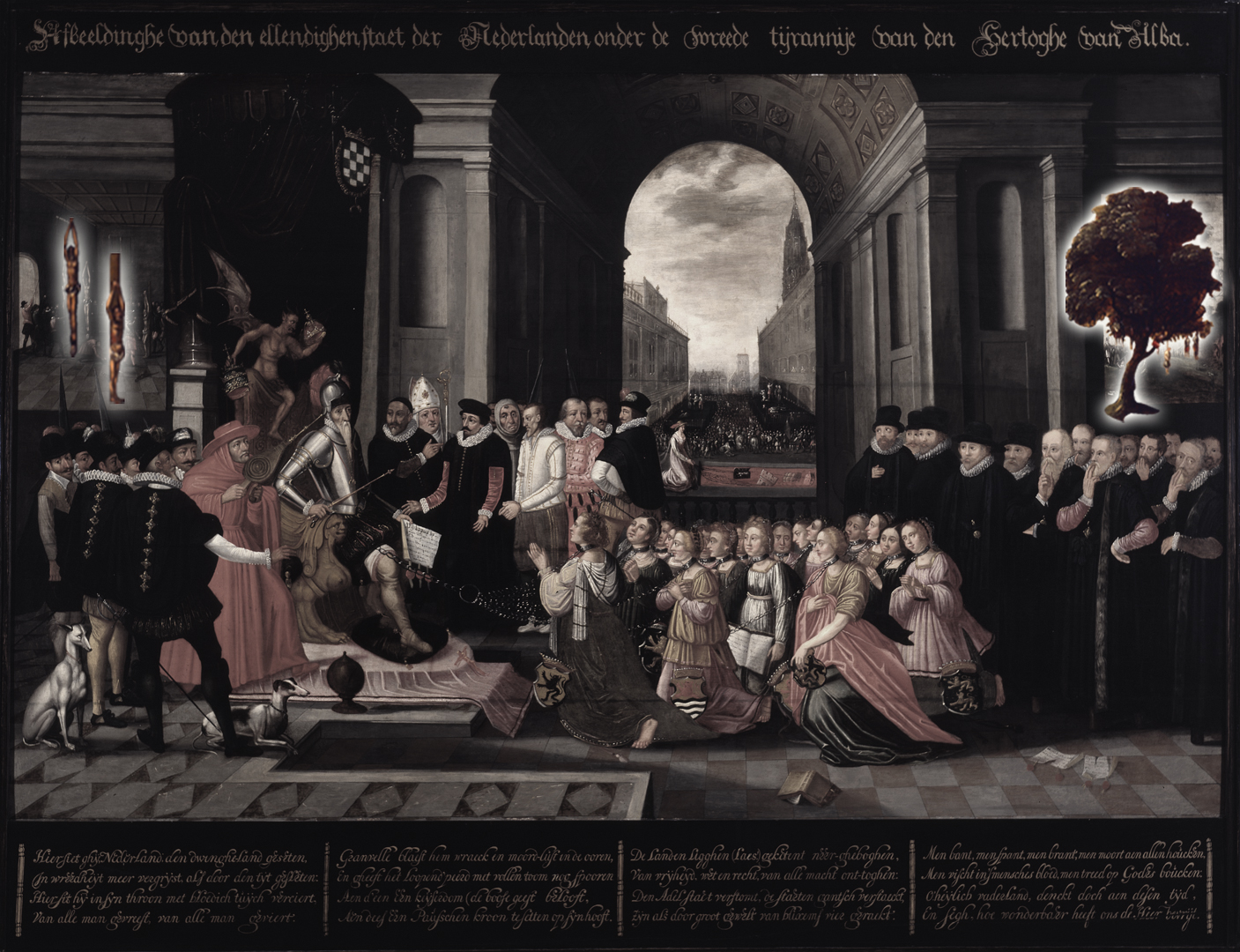
Heretics and rebels
At the top left and right, heretics and rebels are being executed. King Philip II dealt, if possible, even more severely with heretics than his father, Emperor Charles V.
To King Philip, the Iconoclastic Fury in the Netherlands was the last drop. These heretics would be taught a lesson, once and for all.
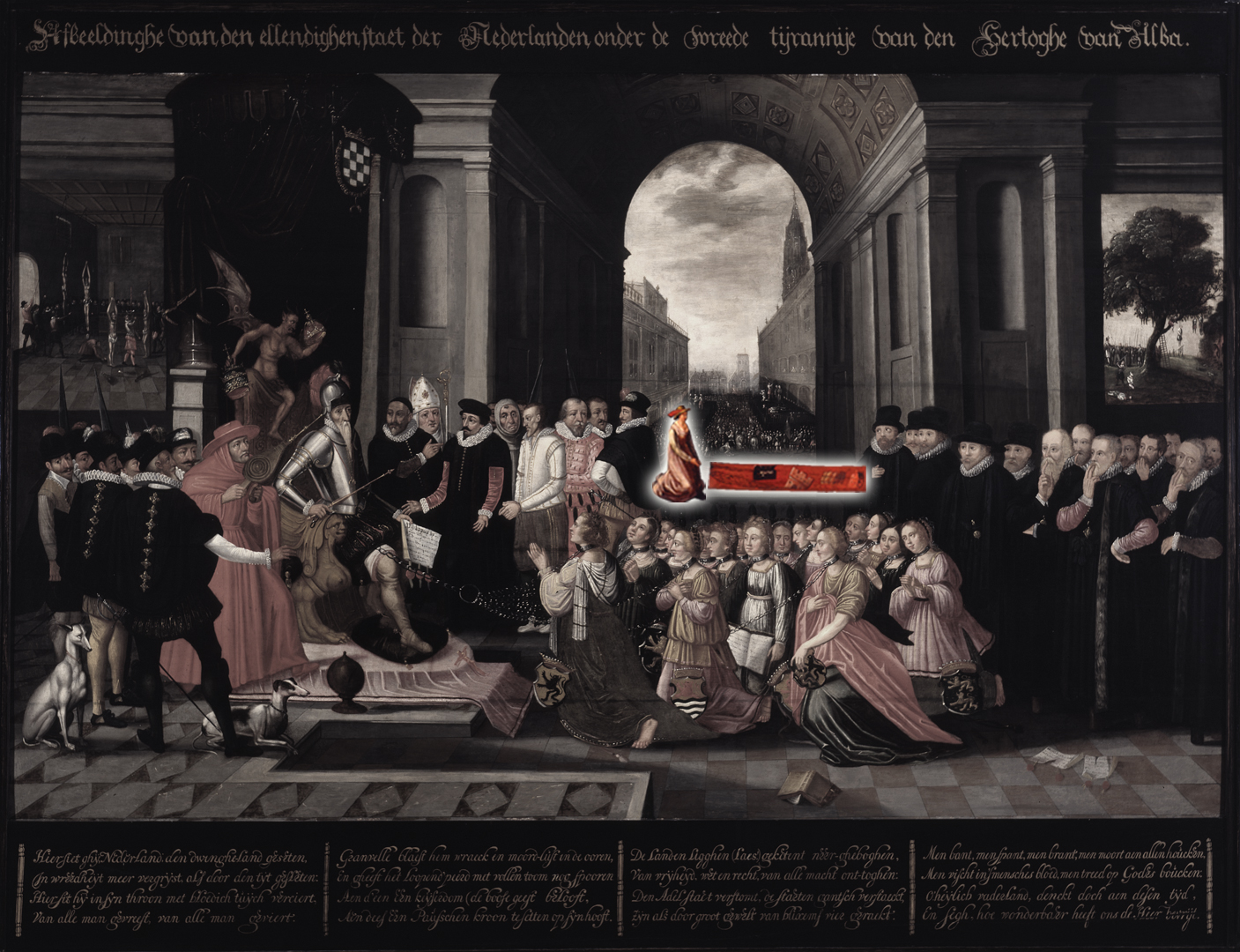
Margaret of Parma
The property of those convicted was confiscated. Here, governor Margaret of Parma, is kneeling to gather the possessions floating in a pool of blood. In reality, Margaret of Parma had left the Netherlands in protest due to the arrival and dominant influence of Alba.
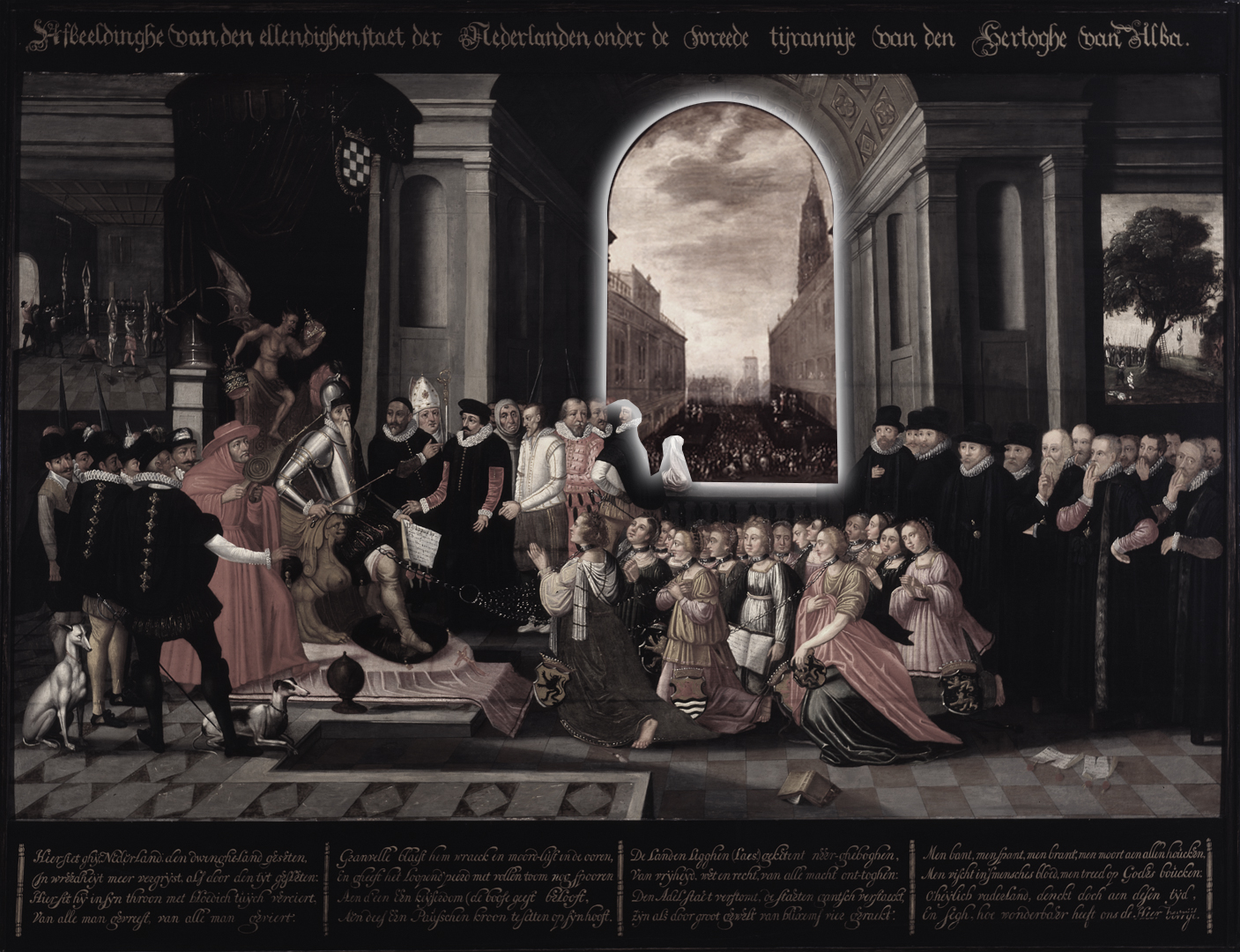
The Grote Markt in Brussels
Here, the leading nobles the counts of Egmont and of Horne are executed, among others. The two nobles did not expect Alba’s arrival to pose too much of a threat.
After all, according to their own standards, they had remained loyal to the king and the Catholic church. The tribunal decided otherwise. The counts were found guilty of treason against king and country because they had not opposed the Protestants emphatically enough.
Their execution caused great dismay, not only in the Netherlands but throughout Europe.
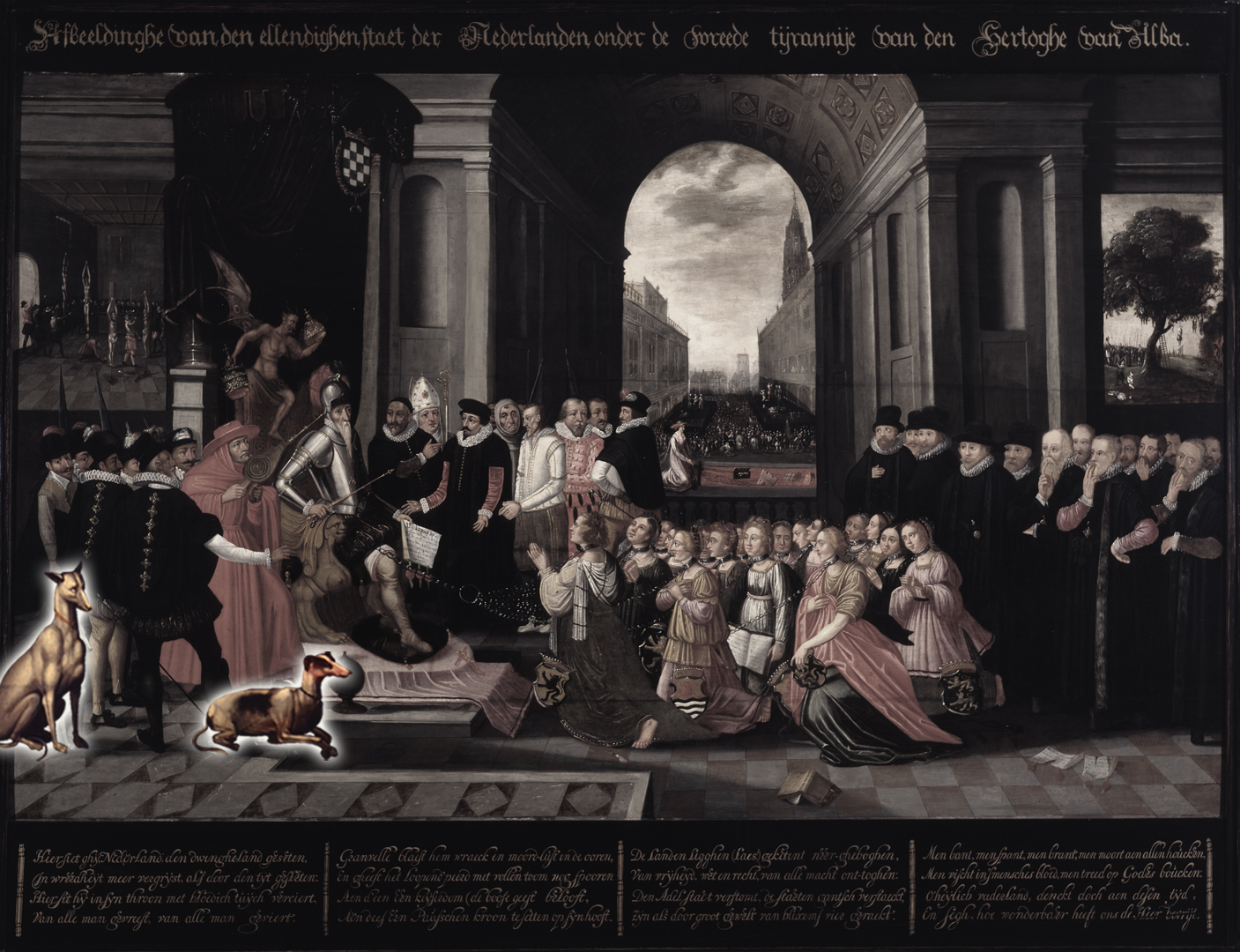
Dogs
Dogs customarily symbolise ‘loyalty’. In this painting, they seem to be associated with the wealth of the court, where hunting and hunting dogs provided important pastimes.
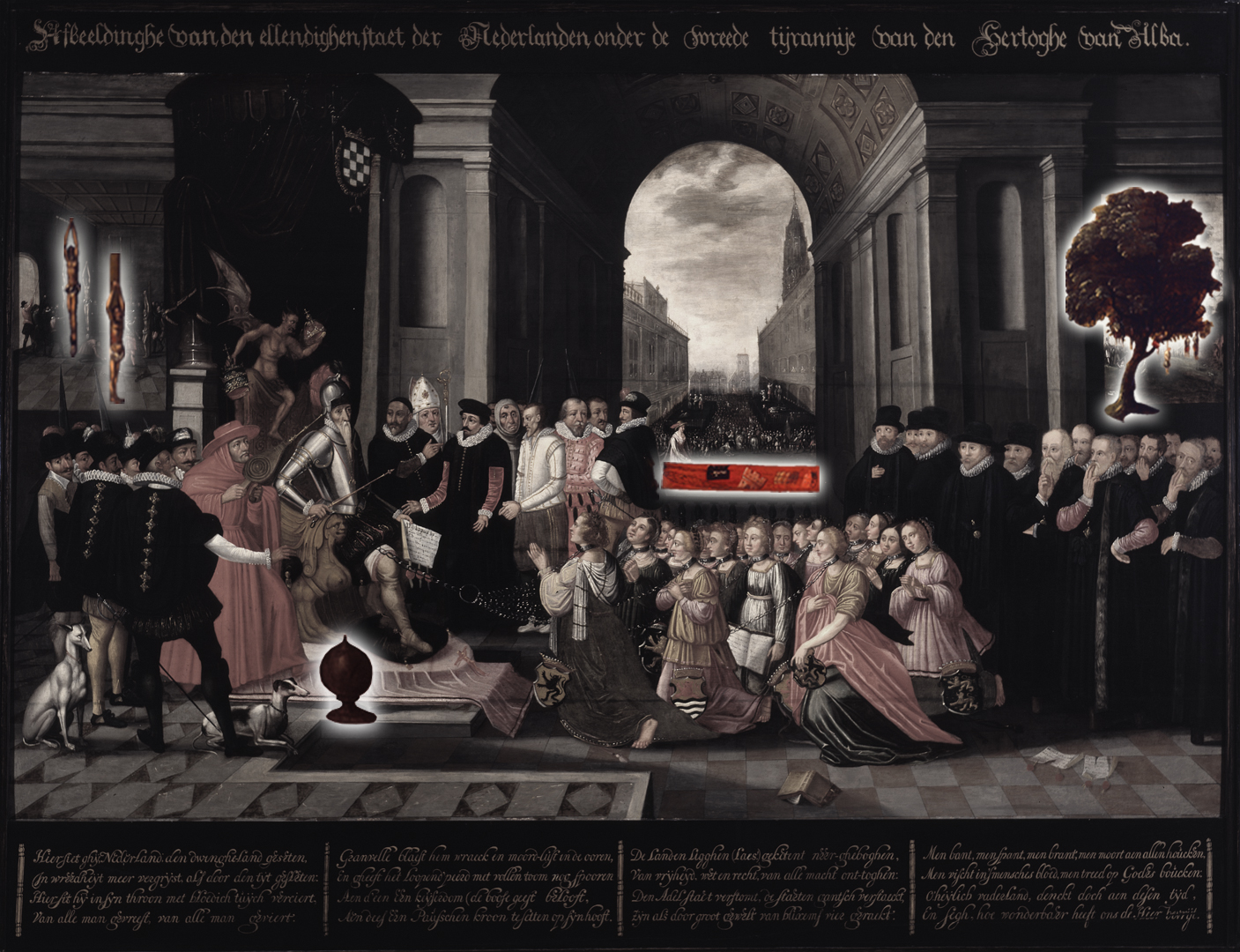
Money pot, pool of blood, executions
The money pot, in front of Alba’s throne, represents the extra taxes levied by Alba. The pool of blood at the centre of the painting and the executions in the top left and right stand for the cruel regime.
Initially, these measures were associated with Alba – the king’s ‘evil’ counsellor and executor; later, they were also associated with King Philip II himself.
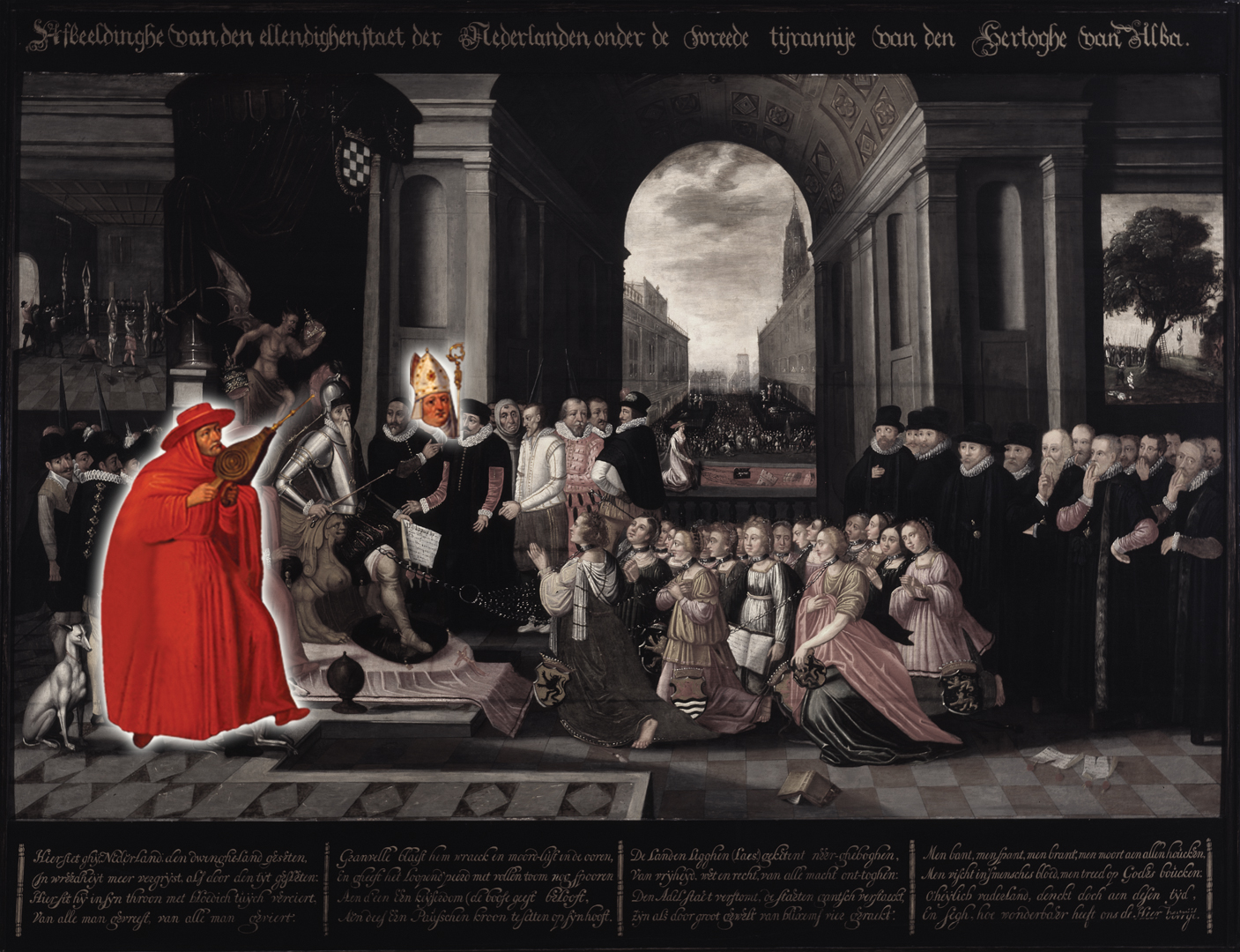
Catholic church
The Catholic church is assigned an evil role in this painting. Alba’s counsellors include a bishop wearing his mitre and Cardinal Granvelle, in red, immediately at Alba’s side. He breathes a lust to kill into Alba’s ear.

Devil
Behind Alba, the devil is holding the papal tiara and the imperial crown in his hands. It is the devil who approves of Alba’s spiritual and secular power. Not God.
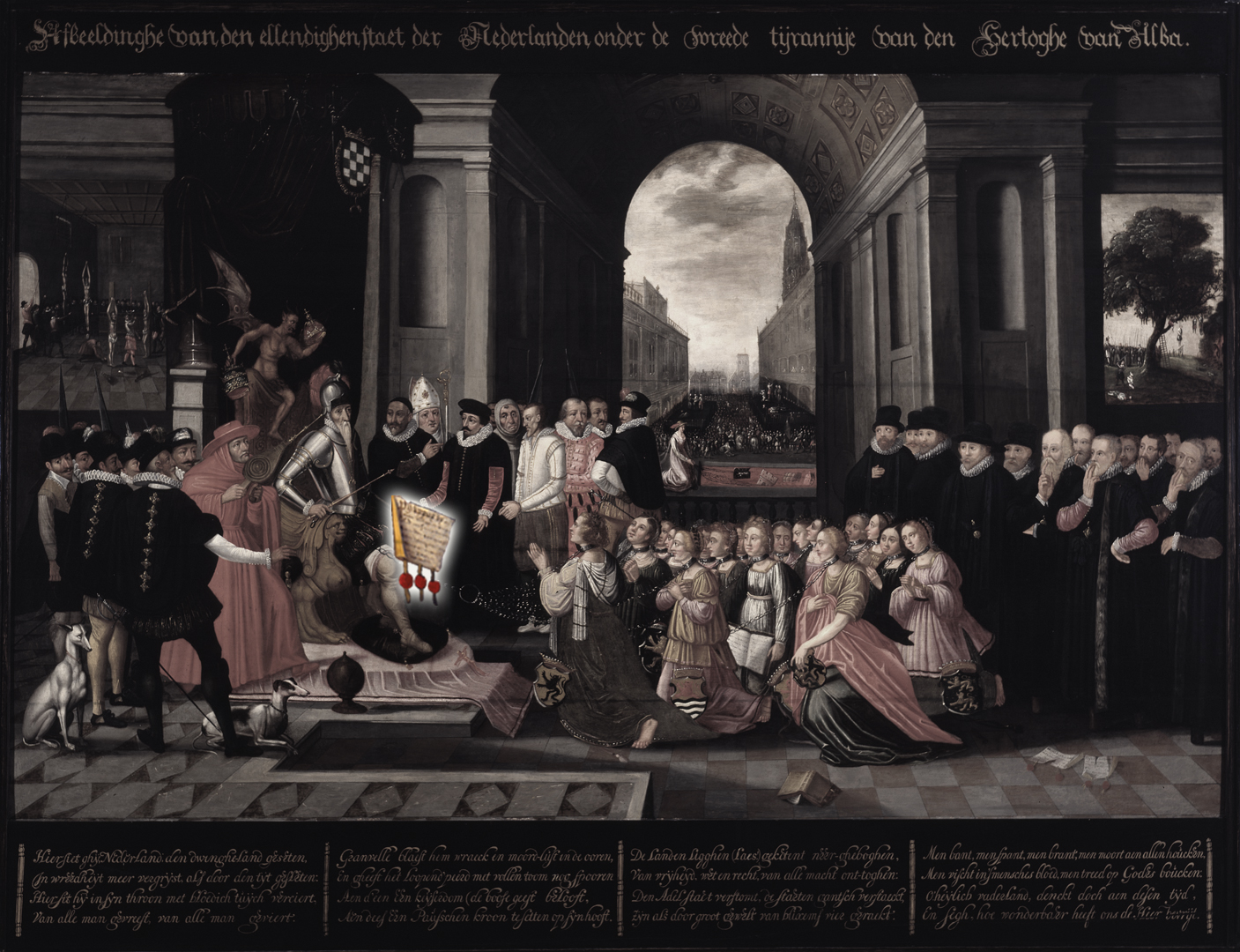
Ordinance in Alba’s hand
This is the ordinance, the missive from King Philip II, with a list of measures Alba was to take.
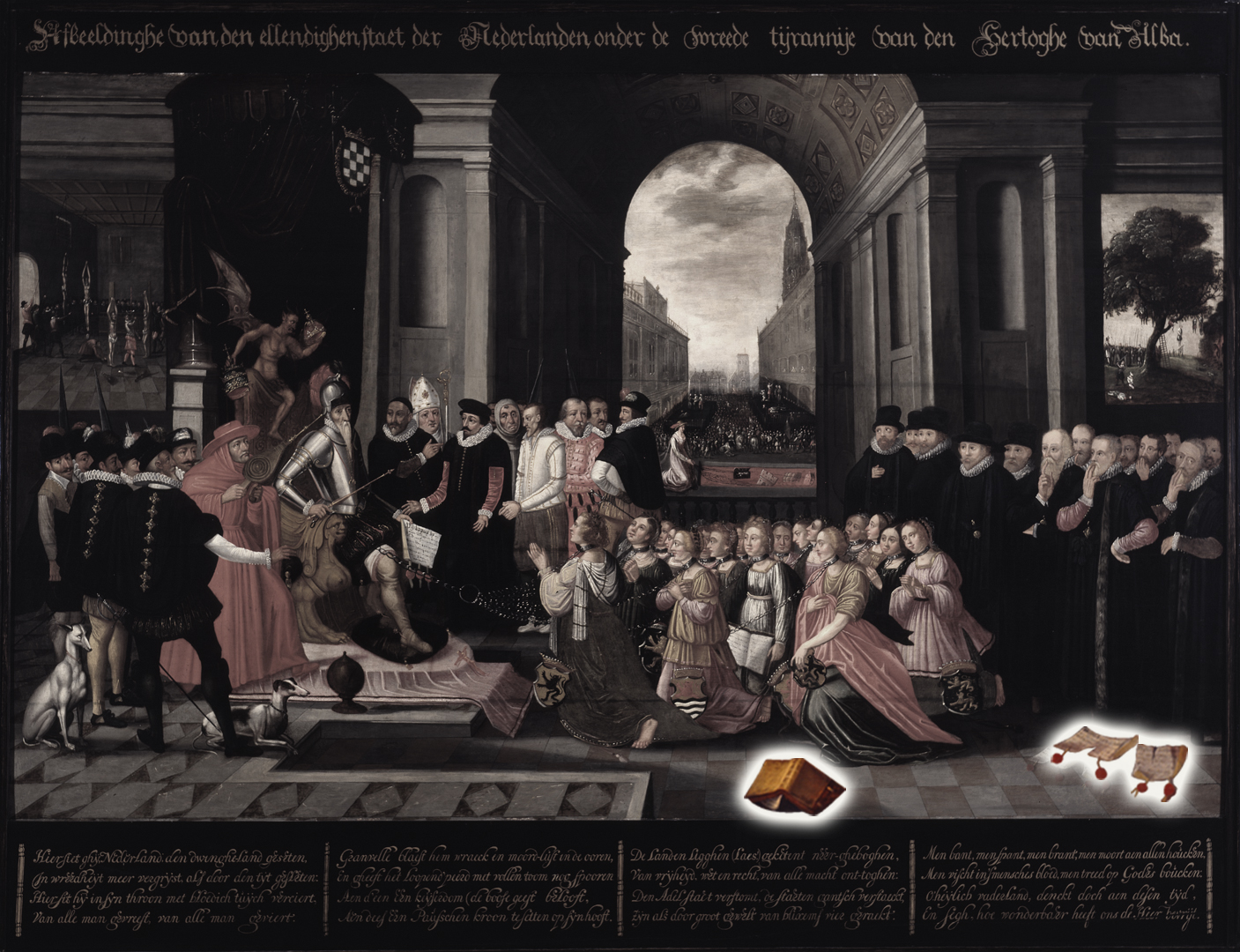
Privileges and the Holy Scripture
The torn up privileges of the Netherlands are on the floor, along with a trampled Bible.